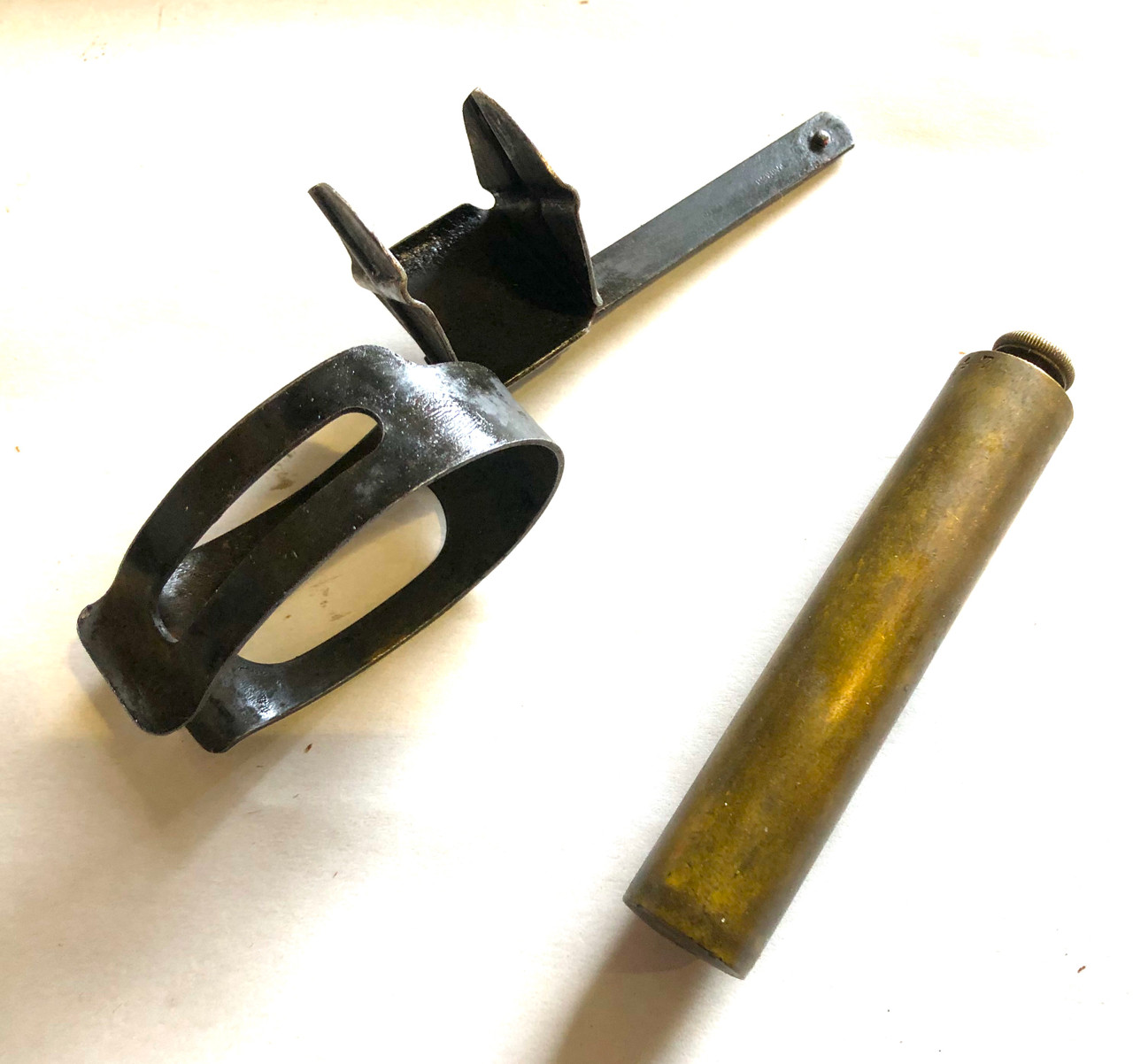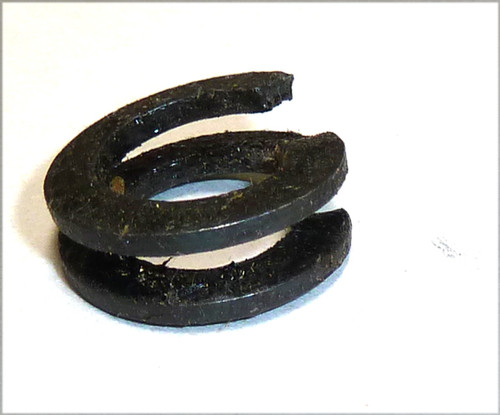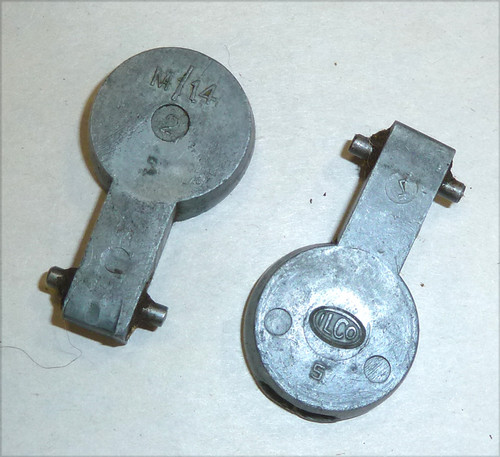Product Description
Original Items:
1 x Early Pattern SMLE Oiler made between 1891-1899 'Knob Top' pattern. Good to very good condition with serial numbers stamped into body and top.
1 x Aimcorrector
Marked "Parker"
Smoked glass reflector is missing... Glass not present
from rifleman.org.uk
A page of instruction on the unit above, from a 1915 Manual of Musketry
III. DIRECTIONS FOR USE OF THE AIMCORRECTOR.
1 . This device is illustrated in Fig. 65. It consists of a small steel box moving freely on a stem, so as to enable it to be made level with the back-sight when the latter is set at various elevations. It is secured to the rifle, behind the back-sight, by a spring clip. A piece of smoked glass is inserted into one of the two cross grooves, so that it forms an angle of 45 degrees with the barrel.
2. In placing the aim-corrector on the rifle, the open side of the box may be turned to the right or left, care being taken that, when the glass is inserted in the box, it is placed in the cross-groove, which will cause it to present to the observer, who is opposite the open end, a reflection of the backsight, the foresight, and the mark at which aim is to be taken. If the glass is placed in the wrong cross-groove, the only image reflected upon it will be the recruit's eye.
3. The instructor, who may take up his position on either side of the recruit, can see the alignment of the sights while the trigger is being pressed by means of the reflection in the glass, without in any degree obscuring the recruit's aim. He can see if aim is correctly maintained when the trigger is pressed, or if it is deflected by this act, and can tell whether the recruit has noted and correctly declared any deflection due to faulty trigger-pressing. In certain lights, the image on the glass may be rather indistinct, but with care it is possible to discern it sufficiently clearly for instruction. In correcting errors, the instructor must remember that, when looking in the glass, the reflection, as in the case of an ordinary mirror, is reversed laterally, but is correct vertically. For instance, if the sight appears upon the glass to the right of the mark, it is actually to the left of it. If, however, it appears high or low in relation to the mark, it is actually above or below the mark.























